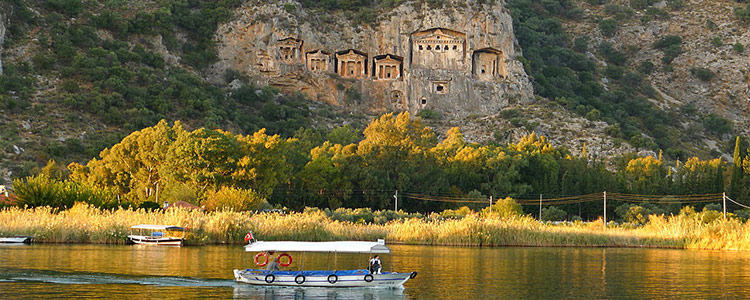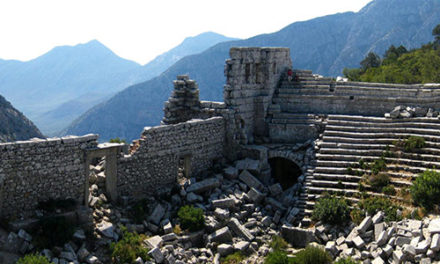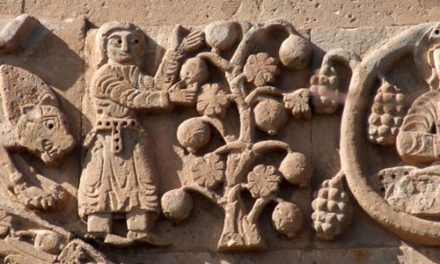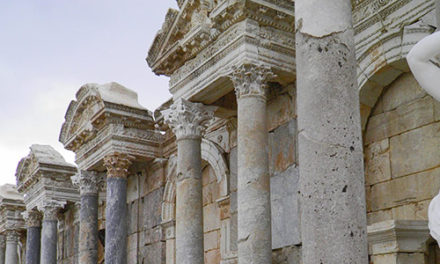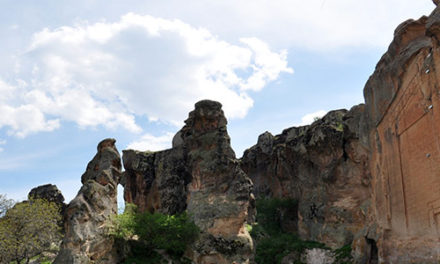Lycia was a region in Anatolia in what are now the provinces of Antalya and Mugla on the southern coast of Turkey. It was a federation of ancient cities in the region and later a province of the Roman Empire. The Lycian League founded in 168 BC was an early federation with democratic principles; these later influenced the United States Constitution.
The principal cities of ancient Lycia were Xanthos, Patara, Myra, Pinara, Tlos, Olympos and Phaselis. Cities such as Telmessos and Krya were sometimes listed by Classical authors as Carian and sometimes as Lycian.
In modern Turkey the region is split between Antalya (on the east) and Mugla (on the west) provinces. The major city is Fethiye built on ancient Telmessos. Well known towns include Kalkan, Kas, and Demre (ancient Myra). Inland Elmalı is fairly important. Many relics of the Lycians remain visible today, especially their distinctive rock-cut tombs in the sides of cliffs in the region. The British Museum in London has one of the best collections of Lycian artifacts.
Who were the Lycians?
Ancient Egyptian records describe the Lycians as allies of the Hittites. According to Herodotus, Lycia was named after Lycus, the son of Pandion II of Athens. Lycia was frequently mentioned by Homer as an ally of Troy. In Homer’s Iliad, the Lycian contingent was said to have been led by two esteemed warriors: Sarpedon (son of Zeus and Laodamia) and Glaucus (son of Hippolochus).
Lycia was an important center of worship for the goddess Leto and later, her twin children, Apollo and Artemis.
The Lycians, spoke an Indo-European language, belonging to its Anatolian branch. The closest language to the Lycian language is the Luwian language, which was spoken in Anatolia during the 2nd and early 1st millennium BC; it may even be its direct ancestor.
Lycian League
The Lycian League was established in 168 BC with democratic principles. The league continued to function after Lycia became a Roman province in 46 AD. Lycia ceased being a federation in the fourth century AD, when it was taken over by the Byzantine Empire.
WORLD HERITAGE:
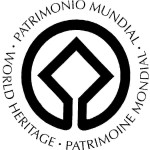 * Antalya / Xantos- Letoon
* Antalya / Xantos- Letoon
Date of Inscription to the World Heritage List: 9.12.1988
List Reference: 484 Criteria: Cultural
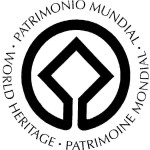 *Gulluk Mountain Termessos National Park
*Gulluk Mountain Termessos National Park
Date of submission to the Tentative World Heritage List: 25/02/2000
List Reference: 1412 Criteria: Cultural
_______________________________________________________________
KEY SITES: In modern Turkey, Lycian region is all along the shore between Mugla and Antalya. The major sites are; Fethiye built on ancient Telmessos, Xanthos, Patara, Myra, Pinara, Tlos, Olympos and Phaselis. Well known towns include Kalkan, Kas, and Demre (ancient Myra)and Inland Elmalı.
MUSEUMS:İstanbul Archeological Museum (Lycian sarcophagus), Antalya Museum, Fethiye Museum, British Museum-London-Kunsthistorisches Museum, Vienna..

